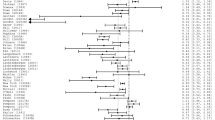Abstract
This study represents an effort to investigate the age pattern of criminal involvement from an economist's perspective. It presents a dynamic stochastic model of sequential search and match evaluation which is used to explain the reasons for, and the timing of, the decision to terminate a criminal career. The behavioral implications derived from the theoretical model are tested using individual National Longitudinal Survey of Youth data. Estimation results strongly support the prediction of a negative relation between theoption value of retaining a criminal career and desistance decisions. More specifically, the effects of current and future expected criminal earnings are shown to be negative, substantial, and statistically significant in determining desistance probabilities. Retiring behavior is also significantly responsive to variables measuring personal costs of punishment and the availability and attractiveness of a legal income-generating activity in ways consistent with theoretical expectations.
Similar content being viewed by others
References
Avi-Itzhak, B., and Shinnar, R. (1973). Quantitative models in crime control.J. Crim. Just. 1: 185–217.
Barnett, A., Blumstein, A., and Farrington, D. (1987). Probabilistic models of youthful criminal careers.Criminology 25: 83–107.
Becker, G. (1968). Crime and punishment: An economic approach.J. Polit. Econ. 76: 169–217.
Blackwell, D. (1965). Discounted dynamic programming.Ann. Math. Stat. 36: 226–235.
Block, M., and Heineke, J. (1975). A labor theoretic analysis of the criminal choice.Am. Econ. Rev. 65: 314–325.
Blumstein, A., and Cohen, J. (1982). The duration of adult criminal careers. InFinal Report to the National Institute of Justice. Pittsburgh, PA.
Blumstein, A., and Moitra, S. (1980). The identification of career criminals from chronic offenders in a cohort.Law Policy Q. 2: 321–334.
Blumstein, A., Farrington, D. and Moitra, S. (1985). Delinquency Careers. In Tonry, M., and Morris, N. (eds.),Crime and Justice: An Annual Review of Research, Vol. 6, University of Chicago Press, Chicago.
Cook, P. (1977). Punishment and crime.Law Contemp. Problems 40: 164–204.
Cook, P., and Zarkin, G. (1985). Crime and the business cycle.J. Legal Stud. 13: 115–128.
Cusson, M., and Pinsonneault, P. (1986).L'Abandon de la Carriere Crimminale, Centre Internationale de la Criminologie Comparee, University of Montreal, Montreal.
Dublin, J., and McFadden, D. (1984). An econometric analysis of residential electric appliance holdings and consumption.Econometrica 52: 345–362.
Ehrlich, I. (1973). Participation in illegitimate activities: A theoretical and empirical investigation.J. Polit. Econ. 81: 521–567.
Farrington, D. P. (1986). Age and crime. In Tonry, M., and Morris, N. (eds),Crime and Justice, Vol. 7, University of Chicago, Chicago, pp. 189–250.
Gottfredson, M., and Hirschi, T. (1986). The true value of lambda would appear to be zero: An essay on career criminals, criminal careers, selective incapacitation, cohort studies, and related topics,Criminology 24: 213–234.
Heckman, J. (1979). Sample selection as a specification error.Econometrica 47: 153–162.
Hindelang, M., Hirschi, T. and Weis, J. (1981).Measuring Delinquency, Sage, Beverly Hills, CA.
Hirschi, T., and Gottfredson, M. (1983). Age and the explanation of crime.Am. J. Socio. 89: 552–584.
Kohn, M., and Shavell, S. (1974). The theory of search.J. Econ. Theory 9: 93–123.
Lee, L. (1983). Generalized econometric models with selectivity.Econometrica 51: 507–512.
Long, S., and Witte, A. D. (1981). Current economic trends: Implications for crime and criminal justice. In Wright, K. N. (ed.),Crime and Criminal Justice in a Declining Economy, Oelgeslchlager, Cambridge, MA, pp. 69–143.
Nagin, D., and Paternoster, R. (1991). On the relationship of past and future participation in delinquency.Criminology 29: 163–190.
Nerlove, M., and Motmarquette, C. (1985). Deterrence and delinquency: An analysis of individual data.J. Quant. Criminol. 1: 37–57.
Phillips, L., and Votey, H. (1987). The influence of police interventions and alternative income sources on the dynamic process of choosing crime as a career.J. Quant. Criminol. 3: 251–273.
Sah, R. (1991). Social osmosis and patterns of crime.J. Polit. Econ. 99: 1272–1295.
Sampson, R. J., and Laub, J. H. (1993).Crime in the Making: Pathways and Turning Points Through Life, Harvard University Press, Cambridge, MA.
Schmidt, P., and Witte, A. D. (1989). Predicting criminal recidivism using split population models.J. Econometr. 40: 141–159.
Shavell, S. (1987). A model of optimal incapacitation.American Economic Association: Papers and Proceedings, pp. 10–110.
Sjoquist, D. (1973). Property crime and economic behavior: Some empirical evidence.Am. Econ. Rev. 63: 439–446.
Stigler, G. (1970). The optimum enforcement of laws.J. Polit. Econ. 78: 526–536.
Tittle, C. (1988). Two empirical regularities in search of an explanation.Criminology 26: 75–85.
Viscusi, W. K. (1986a). Market incentives for criminal behavior. In Freeman, R. (ed.),Inner City Black Youth Employment, NBER Series, University of Chicago Press, Chicago, pp. 301–346.
Viscusi, W. K. (1986b). The risks and rewards of criminal activity.J. Labor Econ. 4(3): 317–340.
Whittle, P. (1982).Optimization over Time: Dynamic Programming and Stochastic Control, John Wiley & Sons, New York.
Witte, A. D. (1980). Estimating the economic model of crime with individual data.Q. J. Econ. 94: 57–84.
Wolfgang, M., Figlio, R., and Sellin, T. (1972).Delinquency in a Birth Cohort, University of Chicago Press, Chicago.
Wolfgang, M., Thornberry, T., and Figlio, R. (1987).From Boy to Man, from Delinquency to Crime, University of Chicago Press, Chicago.
Author information
Authors and Affiliations
Rights and permissions
About this article
Cite this article
Pezzin, L.E. Earnings prospects, matching effects, and the decision to terminate a criminal career. J Quant Criminol 11, 29–50 (1995). https://doi.org/10.1007/BF02221299
Issue Date:
DOI: https://doi.org/10.1007/BF02221299




